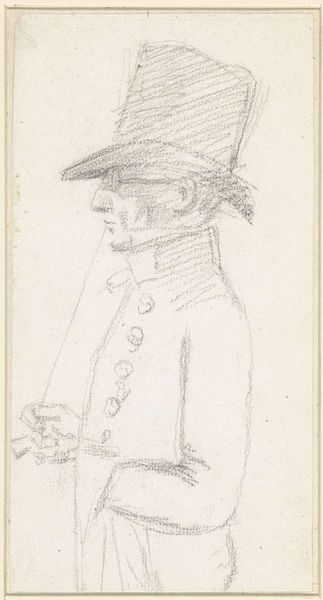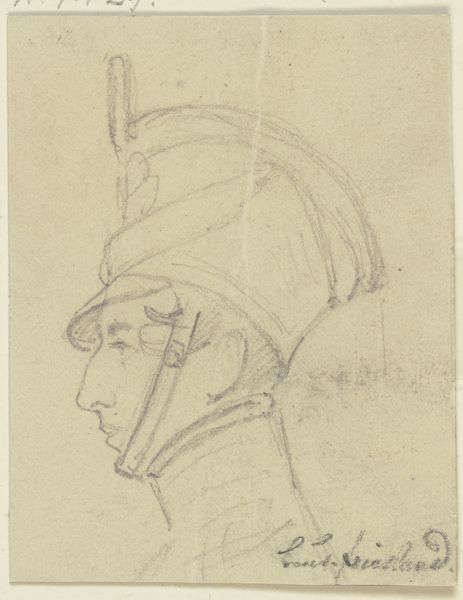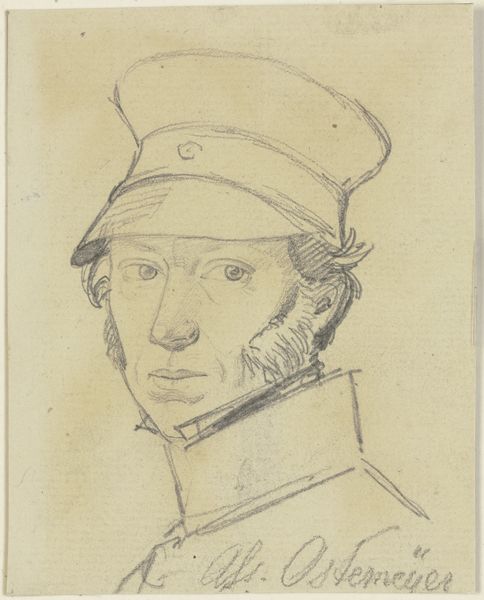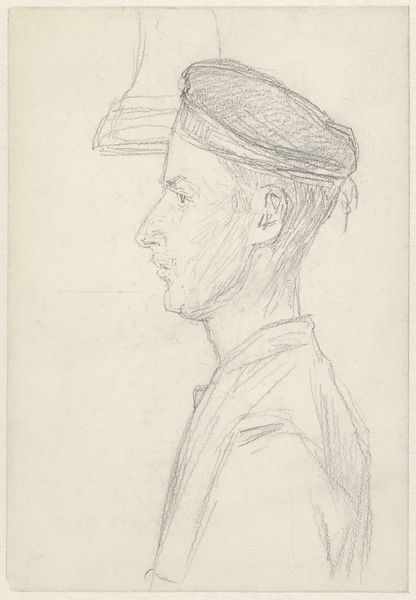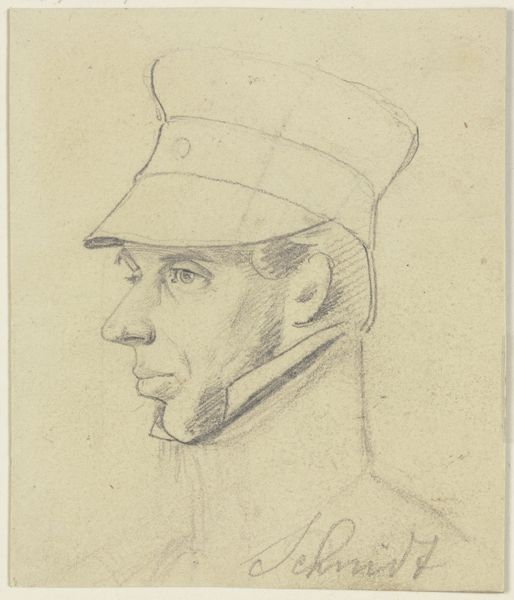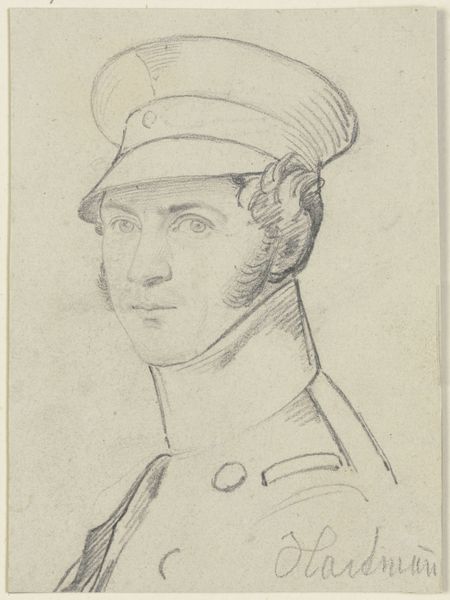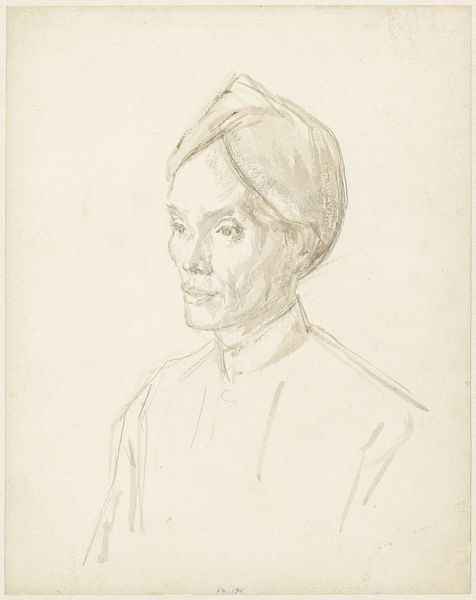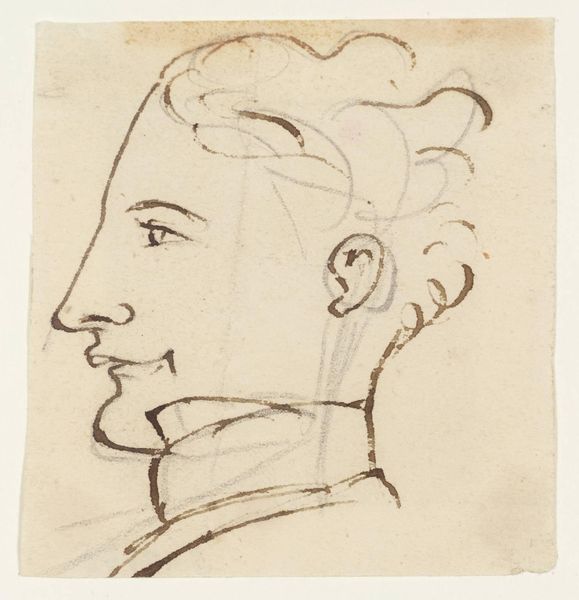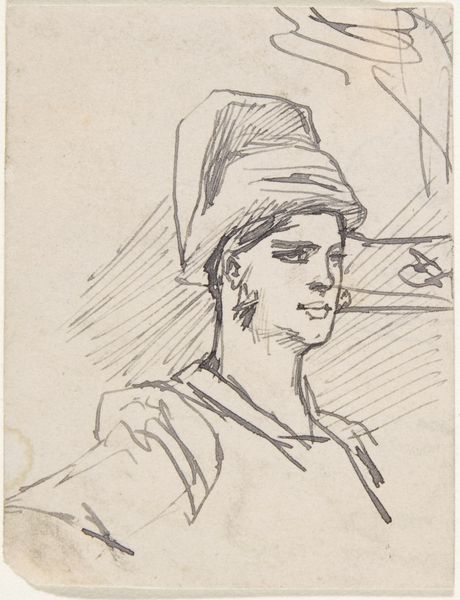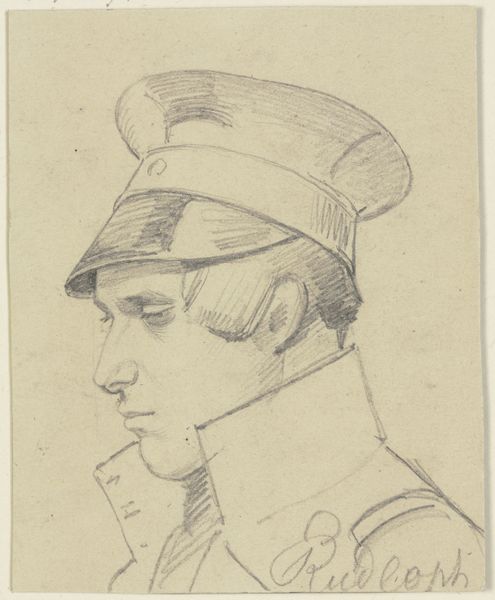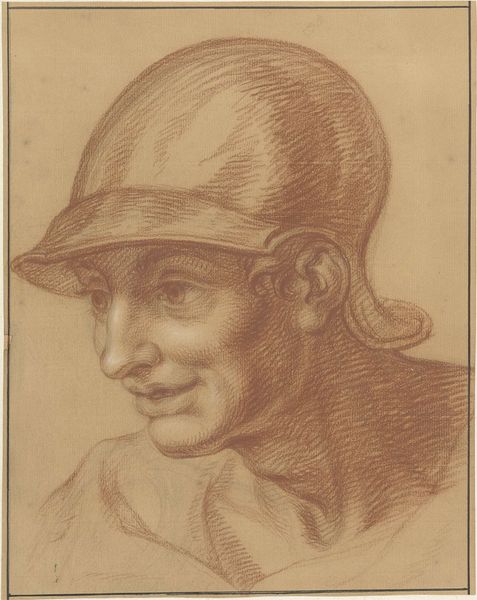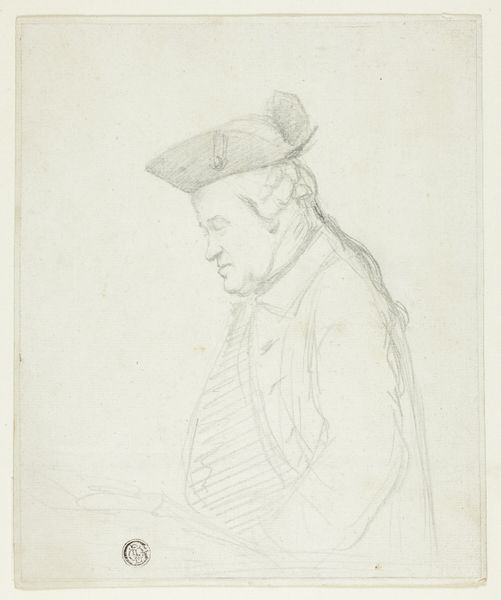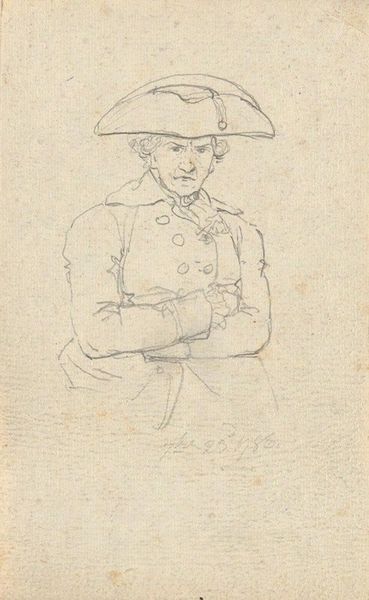
drawing, pencil, graphite
#
portrait
#
drawing
#
caricature
#
pencil
#
graphite
#
portrait drawing
Copyright: Public Domain
Curator: This graphite and pencil drawing from the Städel Museum collection is entitled "Leutnant Polzderf, Brustbild mit Tschako nach rechts," and the artist is Carl Hoff. Editor: My initial impression is one of sketched immediacy – there's a lightness to the touch, but a firm rendering of structure. It evokes a somewhat theatrical and militaristic air. Curator: The handling of line is superb. Look how the artist delineates form and volume with simple hatching, lending considerable depth to the lieutenant’s features and elaborate military cap. Notice how little tone there actually is, yet the implied volumes are palpable. Editor: Indeed. It's fascinating how seemingly innocuous these portraits can be at face value, yet potentially laden with the burden of the historical realities of militarism and social hierarchies. Is there a specific context informing Hoff's portrayal here? Was he critical of the military, perhaps? Curator: Hoff was, more accurately, a history painter. This may be preparatory work toward a larger history painting or study piece showing types. The artist is likely studying a historical type to incorporate as extras in some elaborate canvas that requires numerous figures. Editor: Which raises further questions about the objectification, dehumanization and commodification of those figures. There is something unsettling to me about this portrait – the vacant stare, the formulaic moustache. It presents the banality of state-sponsored power and violence, if one knows their history. Curator: Your reading of the piece is interesting, albeit through the lens of modern sensitivities. I see the composition in terms of line, tonal gradation and the overall formal qualities, its visual rhythm creating an overall cohesive image. The balance between realism and perhaps a touch of caricature is masterful, revealing a skilled and assured draughtsman. Editor: Well, looking at art means also understanding social impact and meaning. These issues aren't necessarily anachronistic, as the representation of power dynamics is ongoing. Even through Hoff's formalistic intentions, his work still sparks contemplation on wider narratives that echo into the present. Curator: That’s quite possible. Still, I’m more captivated by how the image functions in pure compositional terms and the relationship between the volumes described. Editor: As for me, the political interpretation seems richer for its day as well. It encourages reflection.
Comments
No comments
Be the first to comment and join the conversation on the ultimate creative platform.
